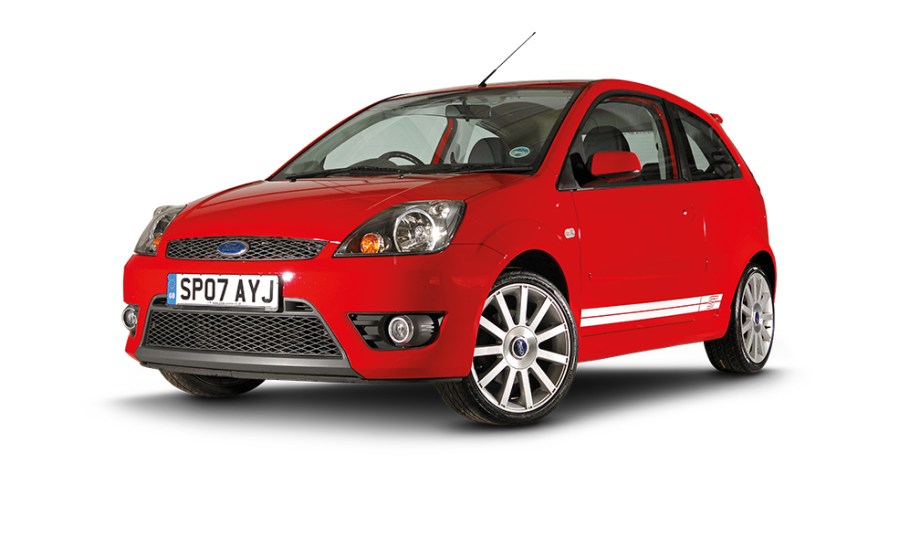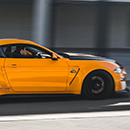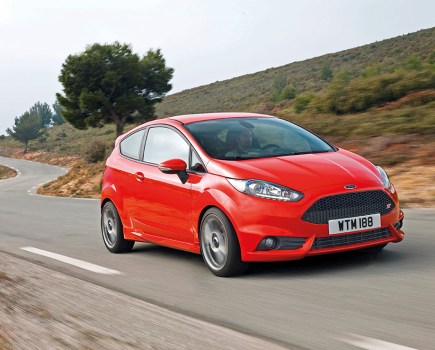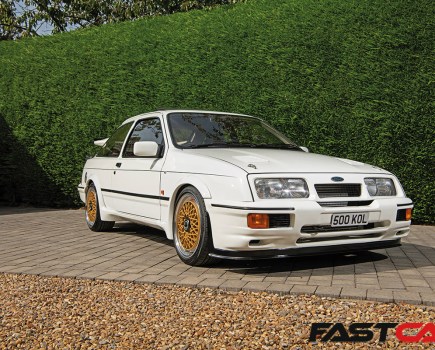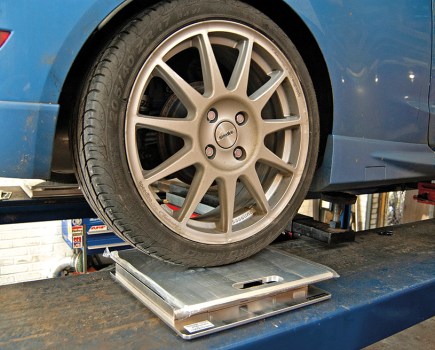Quickly becoming a forgotten fast Ford, the Fiesta ST Mk6 – aka ST150 – is delightful to drive, easy to tune and cheap to run. Here’s how to buy the perfect package for everyday practicality and weekend track action.
As far as cheap thrills go, this Fast Ford offering is hard to pass up. With a tuneable 2.0-litre engine under the bonnet and a low kerbweight, this little hot hatch offers a surpising amount of fun in a small, affordable package. Prices for cars today are well under £3,000 for well-serviced cars, making it not only great for young drivers looking for some driving thrills, but also those who wish to explore track days or dabble in tuning. It’s small, chuckable nature makes it a car that produces far more fun that the on-paper stats will tell you. While it falls shy of the likes of the Renault Clio 172/182, it’s a great alternative that is less harmful on your wallet. Here’s what you need to know before buying one.
Ford Fiesta ST Mk6 history timeline
April 2002 – Sixth-generation Fiesta (Mk6) launched on new platform but with engines, transmissions and suspension types repeating the existing ever-successful Fiesta formula. Production begins at Almussafes, Spain, followed by Cologne, Germany, and many other factories around the world. No high-performance version available.
March 2004 – Fiesta ST unveiled at Geneva motor show as Ford TeamRS’s first production car.
14 October 2004 – Fiesta ST launched in UK, with Mondeo-sourced 2.0-litre Duratec engine, producing 150PS/148bhp, prompting ST150 nickname. Standard equipment includes bodykit, multi-spoke 17in alloy wheels, half-leather upholstery, choice of fashionable paint schemes and optional GT40-type decals. Production takes place at Cologne, Germany.
October 2005 – Fiesta facelift arrives, with new headlamps, tail lights, bumpers, grille, bodyside mouldings. Revised ST interior includes soft-touch instrument panel with plastics in one of several contrasting colours, new upholstery, one-shot-down driver’s window, trip computer.
1 March 2008 – Ford dealer-supplied, warranty-approved Mountune Performance packages become available for the ST150, with choice of 163bhp or 183bhp upgrades.
10 June 2008 – Fiesta ST500 limited edition arrives; 500 are produced, all for UK, featuring Panther Black paintwork with silver stripes, black wheels and carbon fibre-pattern trim.
August 2008 – Fiesta Mk6 discontinued; Mk7 production begins at Cologne. Final (Mk6) ST150s remain available in UK, resulting in 16,579 total sales.
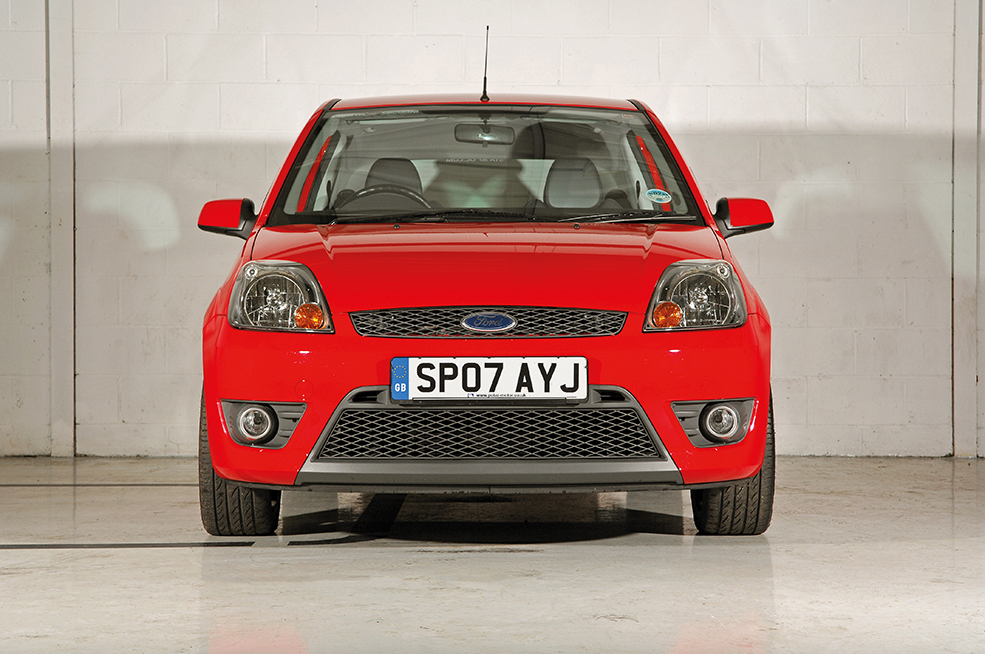
Ford Fiesta ST Mk6 key points to look for
Overall condition – A Fiesta’s overall condition will tell you more about how it’s been looked after than any sales ad. Step back, inspect the paintwork, check the interior and take your time before making a decision.
Engine – ST150s tend to consume oil, so beware of knocking from an oil-starved bottom end or blue smoke from the exhaust. Juddering and a poor idle are pretty normal.
Transmission – Beware of clutch slip, which can be pricey to put right. Run away from any ST150 with rumbling or whining from the transmission.
Body – Mk6 Fiestas don’t tend to rot badly, but there’s potential to find corrosion in the wheelarches, doors, footwells, sills and inner arches. Check panel gaps and paintwork for accident damage.
Suspension – Any ST150 should give you a buzz. A test drive is vital. If it’s sloppy, clonking or unresponsive, find another car. There are plenty of Fiestas out there. Springs are known to fail, so if a car is on replacement suspension, don’t worry.
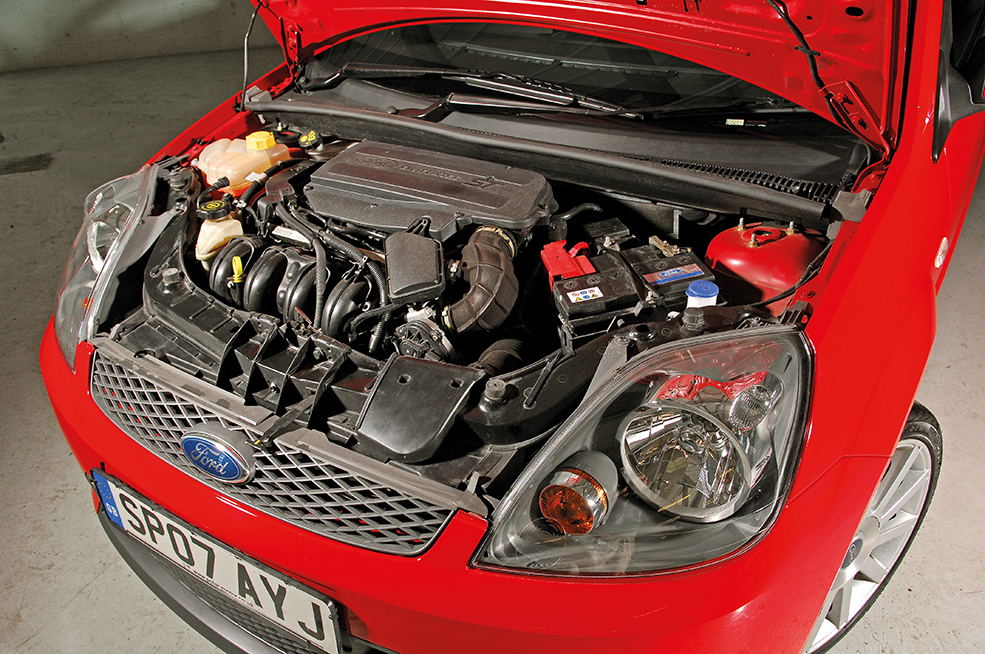
What to look out for when buying a Ford Fiesta ST Mk6
Engine
Nothing to get excited about, the ST150’s 2.0-litre Duratec was lifted from the Focus and Mondeo, meaning it’s unstressed, ultra-reliable and capable of covering mega mileage. Its greatest weakness is a tendency to consume oil; glugging a litre every 1000 miles isn’t uncommon, with potential problems resulting from running low.
Inspect the exhaust for blue smoke at start-up or under load, suggesting valve stem seals and blown piston rings respectively.
Examine the service history, and check the dipstick to ensure the oil is fresh and topped-up. Listen for knocking from the bottom end due to an oil-starved, worn crankshaft and/or bearings – a pricey rebuild is the only solution.
Lighter tapping from the top of the engine is usually the inherently-noisy fuel injectors, but beware of a slack, rattling timing chain – especially from a worn/high-mileage example.
Most Mk6 ST issues are much less to worry about. Poor economy is normal (especially when driven hard), and many owners report jerkiness, particularly from cold or during parking manoeuvres; keeping up the revs should help, but cleaning the throttle body may effect a cure.
Difficulty starting (needing several cranks to fire up), followed by very poor idling (with the revs jumping around) was especially common on pre-facelifts, and part-cured by a Ford ECU reflash. Updated software was also reckoned to solve an annoying rev hang between gearchanges.
The Duratec responds well to modifications (check out this track car feature), so don’t be afraid to take on a modified ST, especially if it comes with receipts from trustworthy tuners.
Keep a look out for an official dealer-supplied Mountune conversion. The MP165 featured induction kit, remap, sports cat and exhaust; MP185 added high-lift cams and valve springs; the MR200 also gained an uprated intake manifold and 60mm throttle body.

Transmission
Generally reliable, even when abused or neglected, the ST150’s gearbox is a regular IB5 five-speed, found in millions of Fords from 1995 onwards. Many will see well over 100,000 miles without a fault, yet a few reputedly blew up; this was far from common, and occurred on early low-mileage examples. Since then, it’s applied mainly to heavily-modified cars – in which case, listen for whining, rumbling and growling. The standard differential can’t cope with big power, and when it goes bang it can trash the entire gearbox.
The ST150 should feature a pleasant, precise shift. Notchiness is a concern, especially if accompanied by excessive noise. Synchromesh failure (and need for a new gearbox) causes crunching between gears (especially when changing from second to third). Otherwise, feeling tight from cold but sloppy or difficult to engage gears once warm is the sign of a stiff or knackered linkage (which may recover by simply lubricating with multi-purpose grease).
Juddering when pulling away is usually a quirk of the car (or ECU software), although you need to ensure the clutch isn’t on its last legs – either slipping or biting too high on the pedal. Test for clutch slip by accelerating from low revs in third gear, ensuring the road speed increases conducive to engine revs.
Fear not if it’s just a floppy pedal. It’s extremely common to find a Mk6 where the master cylinder linkage has become detached.
An official Ford fix to reattach the pedal involved adding 50p-worth of modified clip to stop the cable from falling off. Not all cars received the upgrade via the recall, but facelift models had a longer pedal anyway. It’s not a deal-breaker.
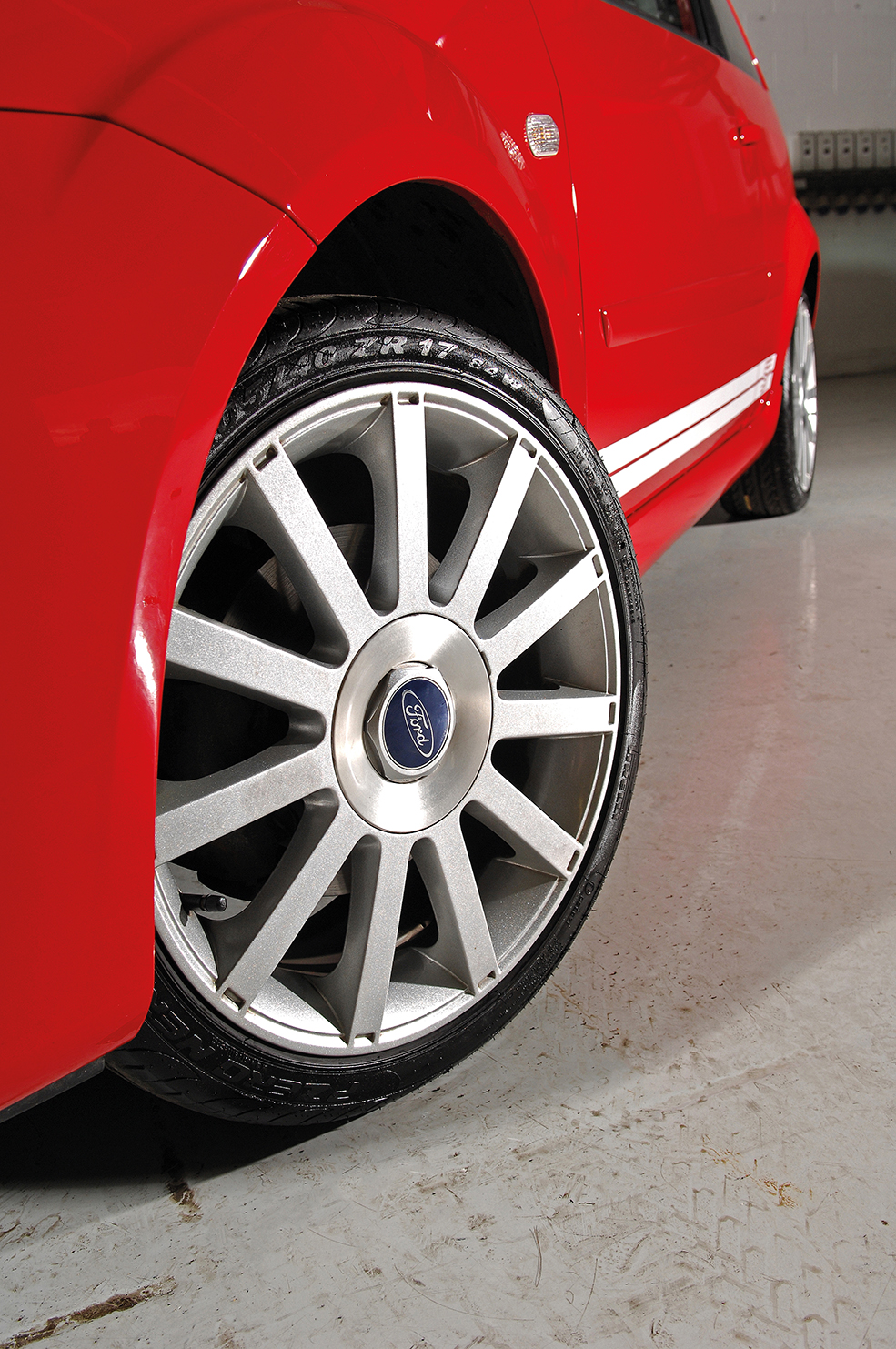
Suspension
Handling is key to the ST150’s appeal. If it’s not sharp and agile, you’re buying the wrong car.
A test over mixed roads is essential. Worn-out rubber bushes are the most likely culprit of a deadened driving experience, while knackered dampers and poor alignment will also adversely affect roadholding. Snapped coil springs are fairly common on the Mk6; they may clonk or rattle over bumpy surfaces, but aren’t often obvious until you look underneath.
Listen for rumbling – jack up the car and give the rims a wobble to check for worn wheel bearings. Weird groaning noises coming from the front (especially when hot) point to the power-assisted steering (PAS) pump being on its last legs; the steering may well feel heavy too. Check the colour of the PAS fluid, which should be red; black liquid in the reservoir tells you it has overheated at some point in the past, which is common for hard-driven STs thanks to the tank being attached to the engine. Refreshing the fluid should help, but an ST150 being used on tracks ought to have a PAS tank relocation kit and/or an oil cooler fitted, both of which are suitably cheap to buy.
Brakes
Ford’s ST150 brakes work well and are the same callipers up front and rear discs as the Focus ST170. It’s a lightweight car, so fast-road or track-day brake pads should be more than man enough for any task. But a hard-driven example will probably exhibit juddering through the brake pedal or steering wheel, thanks to worn or contaminated discs and/or pads.If they’re constant vibrations, suspect damaged wheels (prone to buckling) or tyres.
Rear brakes can be prone to seizing, and it’s typical to find the handbrake struggling to hold the car. Usually it’s due to a stretched or dry handbrake cable in need of lubrication – the latter in particular if you hear squealing from the offside rear.
Ford Fiesta ST Mk6 brake pipes are renowned for rusting, and can be fiddly to replace.
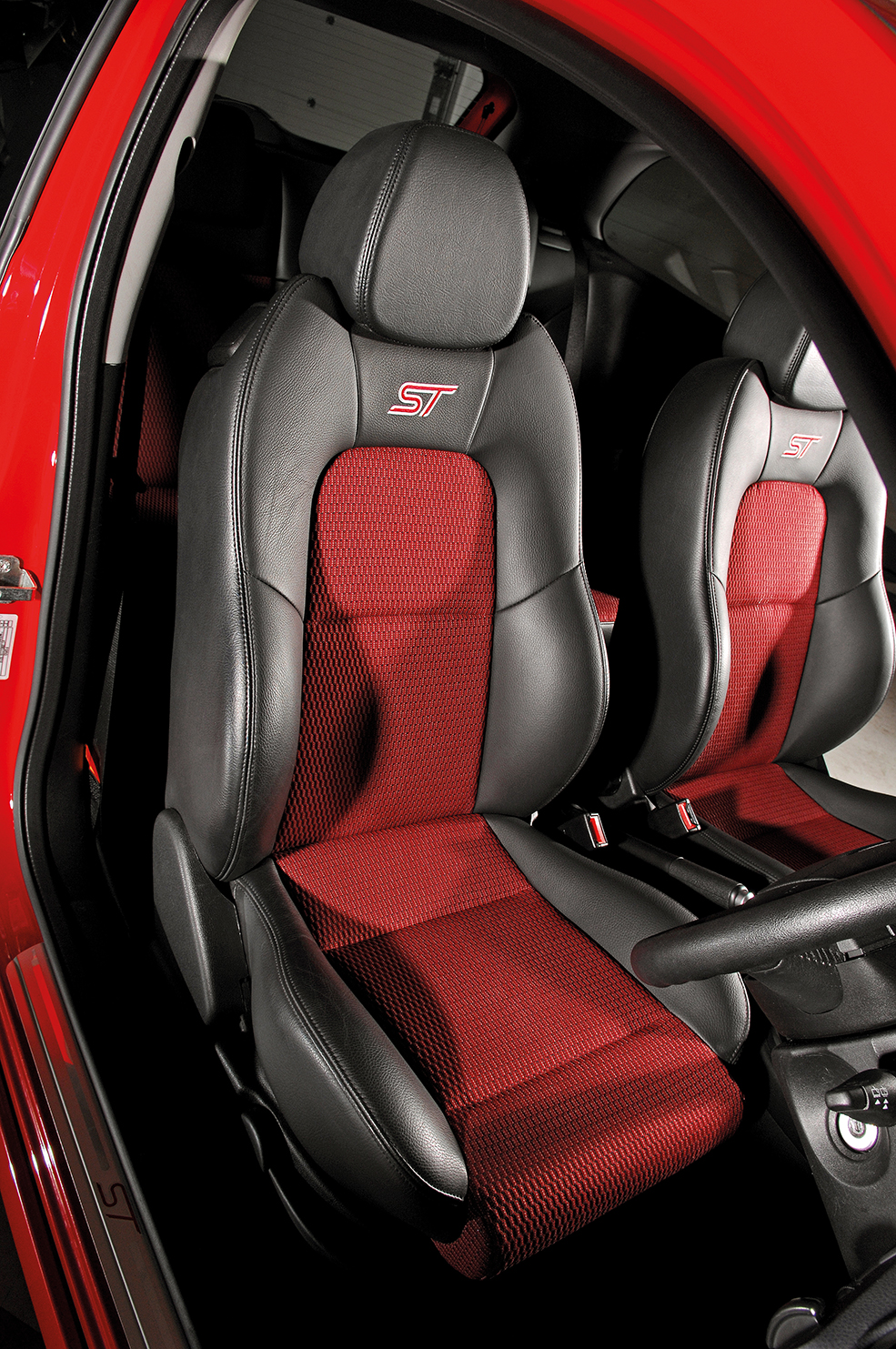
Interior
Don’t expect too much when it comes to the interior. The Mk6 Fiesta was an economy model, and the cabin reflects it. Rattles, squeaks and groans are simply part of the ST150 soundtrack; most owners fit a louder exhaust and turn up the stereo, which seems to help. The dashboard is most likely to be noisy, with broken clips and cheap brackets no longer lining up. Cold weather tends to make it worse. High-mileage examples often look shabby, but even lesser-used STs may contain scuffed plastics and look worn around the edges.
The upholstery isn’t too bad, other than sagging, but the folding seat catches fail regularly, with loose cables or snapped connections underneath.
Early ST150s had front seats in black leather with red or blue cloth centre sections, depending on exterior body colour, and featuring the new ST logo. Facelifted STs included colour-keyed seats, dashboards and door panels: Diamond White, Frozen White, Moondust Silver and Panther Black had a choice of Hot Copper, Blue Diamond, Ebony Haze or Sapphire Haze; Colorado Red received Hot Copper or Ebony Haze; Performance Blue could be accompanied by Blue Diamond, Ebony Haze or Sapphire Haze.
Trim isn’t tricky to find at the moment, but give it a few years, and certain colours will become rare. Buy spares and stick them in the loft.
Optional extras
Full-leather heated seats were optional (standard on the pricey ST500), while some Mountune STs were treated to black leather/suede Recaros. Well worth searching for. Also, look out for a Reflex Pack (extra airbags and rear centre headrest) or pre-facelift Interior Styling Pack, giving shiny trim and ST mats.
Check all the gadgets work property. A heated windscreen was standard, and elements are prone to failing; heated mirrors suffer the same fate (operated by the rear window heater switch). Fully-functioning air conditioning is a bonus.
Factory alarm systems can be erratic (needing a replacement module), glowing airbag lights are common (a loose connection under a front seat is the usual culprit), and alternators are sometimes problematic; check the battery light isn’t on.
A trip computer was standard on the facelifted ST. Extra-cost options included Technology Pack, comprising automatic headlights (which may flick around, wearing out the motors), auto windscreen wipers, (prone to failure) and power-folding mirrors (which break; when you lock the doors, make sure they don’t keep clicking).
Other extras worth paying for include EATC climate control, Bluetooth with voice control, sat nav stereo and MP3 connectivity. Electronic Stability Program (ESP) isn’t necessary.
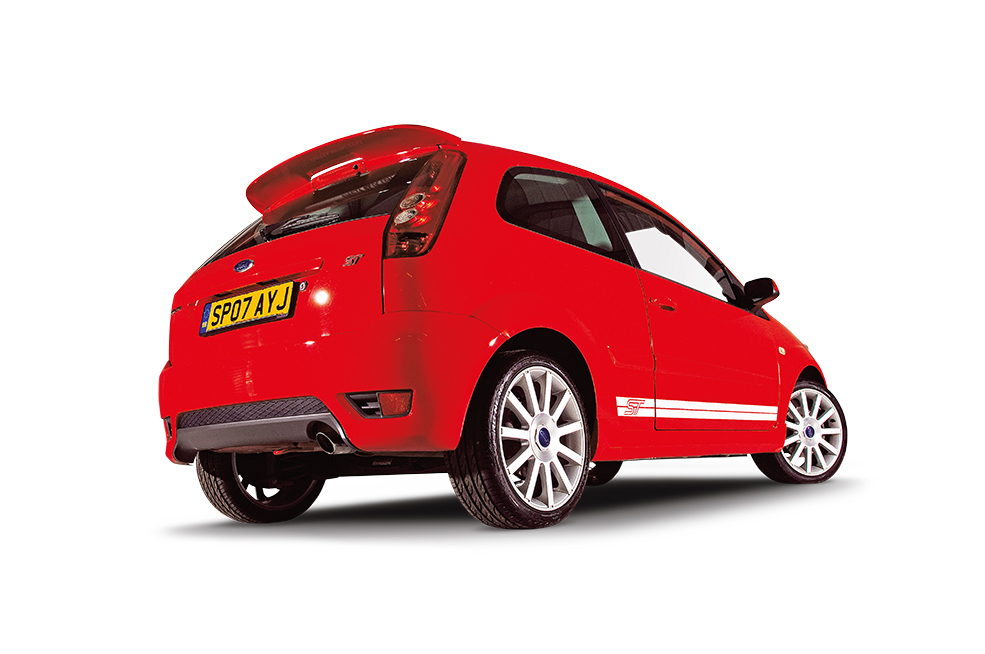
Exterior
Rust isn’t a serious concern on the Mk6, but corrosion could be creeping its way around the car, and your go-faster project might become a rust-chasing exercise. Look for bubbles around the wheelarches, notably the rears where they attach to the side skirts. The sills may well be rotting, but it’s unlikely you’ll see unless you take off the skirts.
If possible, remove the wheelarch liners and shine a torch into the inner wings; muck and moisture gets trapped behind the foam insulation. Left alone, they’ll form substantial holes – if they haven’t already…
Doors tend to fill with water when the drain holes become blocked, leading to rust forming from inside out. Check the tailgate too, and ensure there’s no water leaking into the boot.
Inside the cabin, inspect the front footwells, especially the passenger side; a poorly-sealing pollen filter lets rainwater leak into the car, eventually resulting in a rotten floor.
Tatty ST150s are pretty common, and several are hiding accident damage – so pay attention to poor panel gaps, dodgy paintwork, overspray inside door shuts and unusual creases underneath.
Body colour choices are down to personal preference, although Performance Blue and Frozen White are most desirable; they sometimes fetch a small premium.
Many ST150s were specified with Exterior Styling Pack of side stripes and over-the-top bonnet/roof/tailgate stickers. Rare sunroof-equipped STs received only the door decals.
Identity
Facelifted ST150s, introduced in October 2005, are worth a bit more cash: they’re identified by their bulbous headlamps and updated rear light clusters (with twin reversing lamps); inside there’s a soft-touch dashboard in dark grey, blue or red, plus shiny door handles and gearstick surround.
ST500s can double the price of a normal ST150, so check it’s the real deal (built after April 2008), wearing all the right kit: Panther Black paintwork with silver decals, matching Panther Black 11-spoke 17in ST150 alloys, red-painted brake callipers, Ebony leather heated seats, carbon fibre-pattern trim (fascia and gearshift surround) and upgraded Sony audio system.
As always, invest in a thorough identity check (not a cheap phone app), and it’s vital to ensure the car’s chassis number matches between the log book, the VIN plate on the offside B-pillar, a stamping in the offside suspension turret, a tag on the nearside of the dashboard (visible when looking through the windscreen from outside) and what’s stamped into the floorpan next to the driver’s seat. Don’t forget to take an OBDII code reader and plug it into the car’s port to check the VIN on the ECU.
Why you want a Ford Fiesta ST Mk6
- Heralded as the modern-day XR2, it’s good, old-fashioned fast Ford fare of a big normally-aspirated engine in a lightweight body.
- Superb to drive and simple to tune, the ST150 is a firm favourite for anyone looking for cut-price fast Ford thrills. You’ll not bag a better hot-hatch bargain.
- ST500s are already rocketing in price, but if you buy wisely you could bag a sensibly-priced ST150 and enjoy it at weekends while its value steadily rises.
Why you don’t…
- ST150s are looking – and feeling – pretty old now. So don’t buy an ST150 hoping to look as cool as your mates in their latest-registration finance-mobiles.
- Niggling faults could mount up to frustrating levels – from an unstable idle and noisy PAS to rust scabs and broken seat handles.
- ST150s are massive fun but they’re relatively unrefined; as an everyday driver they’re small, noisy and remarkably thirsty.
Guide from Fast Ford magazine. Words: Dan Williamson.

